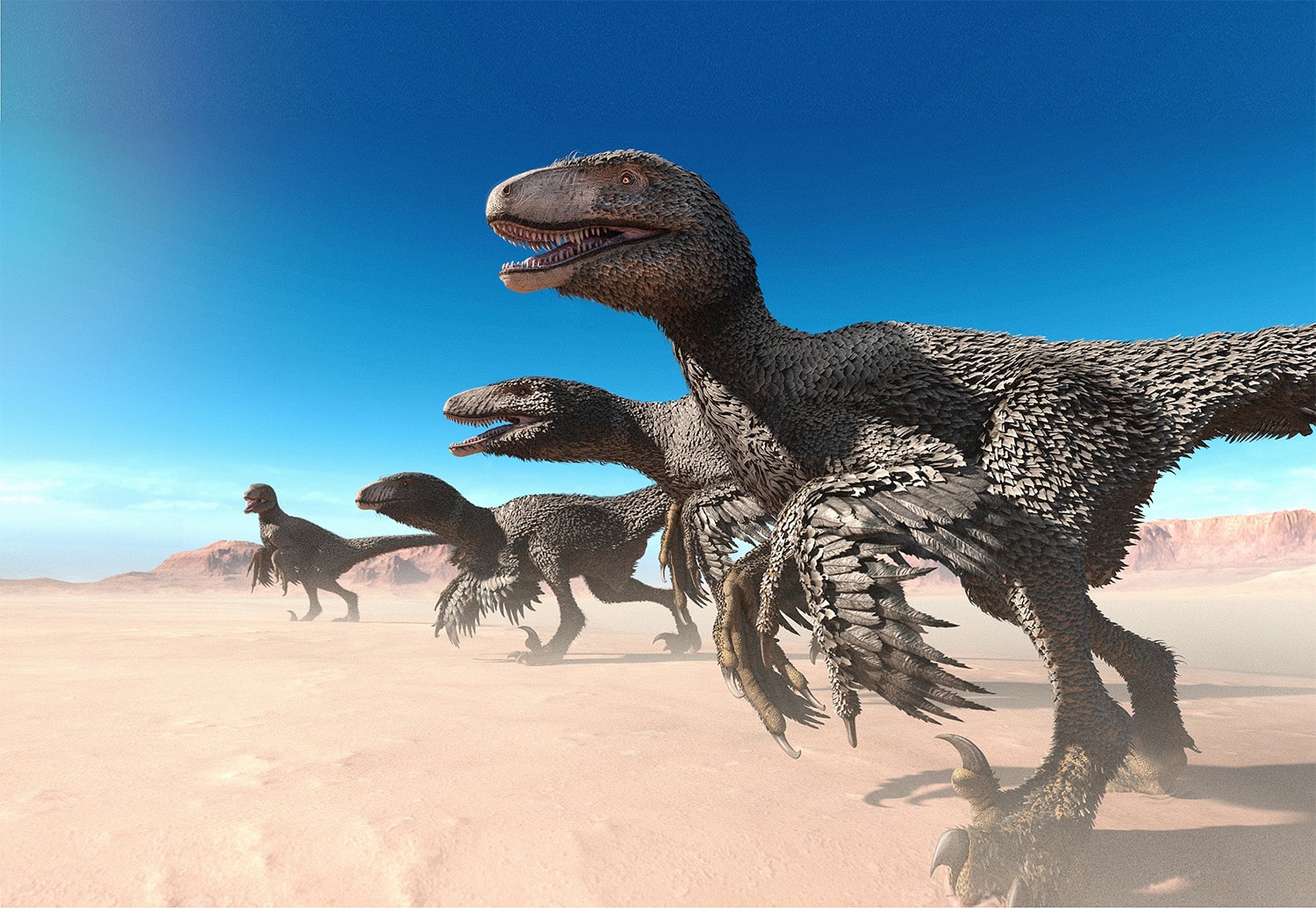
21 interesting facts about Feathered Dinosaurs
- 👁️ 315
Feathered dinosaurs represent a fascinating group of ancient creatures that blur the lines between traditional perceptions of dinosaurs and birds. Recent paleontological discoveries have upended our understanding of dinosaur evolution, revealing that feathers were more common among these ancient reptiles than previously thought. These findings suggest that feathers likely served various functions such as insulation, display, and possibly flight. The integration of feathers into the evolutionary narrative of dinosaurs not only enriches our understanding of their diversity and biology but also illustrates the complex pathways of evolutionary change.
- The first definitive evidence of feathered dinosaurs came from fossils found in the Liaoning Province of China in the mid-1990s.
- Many feathered dinosaurs, like the Velociraptor, were theropods, a group of bipedal carnivores that also includes the ancestors of birds.
- Sinosauropteryx, discovered in China, is one of the earliest known feathered dinosaurs and featured simple filament-like feathers.
- Microraptor, another early feathered dinosaur, had wings on both its arms and legs, suggesting it could glide between trees.
- The discovery of feathered dinosaurs supports the theory that birds evolved from theropod dinosaurs during the Jurassic Period.
- Archaeopteryx, often considered the first bird, shares many features with small feathered theropods.
- Some feathered dinosaurs had plumage with colors, as determined through the examination of melanosome structures preserved in the feathers.
- Feathers in dinosaurs may have initially evolved for insulation or display before being adapted for flight.
- The feathered dinosaur Anchiornis had wings and feathered legs resembling trousers, indicating complex feather arrangement.
- Yutyrannus huali, a relative of Tyrannosaurus rex, was covered with feathers and is the largest feathered dinosaur discovered to date.
- Many feathered dinosaurs, including the well-known Velociraptor, had quill knobs on their forearms, a feature supporting the attachment of large feathers.
- The diversity in feather types among different species suggests that feathers were widespread across various dinosaur groups.
- Theories suggest that some feathered dinosaurs could display their feathers to attract mates or deter rivals, much like modern birds.
- Psittacosaurus, a ceratopsian dinosaur, had bristle-like tail feathers, showing that feather-like structures were not limited to theropods.
- Studies on fossilized feathers suggest some dinosaurs could have been capable of powered flight.
- The transition from scales to feathers in dinosaurs may have occurred gradually, with scales becoming modified into various types of feather-like structures.
- Oviraptor, a Mongolian dinosaur, was initially thought to be stealing eggs due to its name meaning ‘egg thief’, but later found brooding over its nest, indicating complex reproductive behavior.
- The Caudipteryx, another feathered dinosaur from China, had symmetrical feathers, which are less efficient for flight, suggesting its feathers were used for display.
- The presence of feathers in many different dinosaur species suggests a common ancestry with birds earlier in the dinosaur lineage than previously thought.
- Therizinosaurus, despite its massive size, had long filamentous feathers on its arms, indicating that not all feathered dinosaurs were small.
- The discovery of feathered dinosaurs has led to the re-evaluation of dinosaur illustrations in media and literature, shifting from scaly reptilian forms to more bird-like depictions.
In conclusion, the study of feathered dinosaurs not only reshapes our understanding of these ancient creatures but also highlights the dynamic and adaptable nature of life on Earth. These discoveries bridge the gap between birds and dinosaurs, illustrating the evolutionary continuum and the shared heritage that connects modern avian species with their ancient ancestors. Feathered dinosaurs underscore the complexity of evolutionary traits such as feathers, providing key insights into evolutionary biology and the mechanisms of natural selection.
Feathered dinosaurs represent a fascinating group of ancient creatures that blur the lines between traditional perceptions of dinosaurs and birds. Recent paleontological discoveries have upended our understanding of dinosaur evolution, revealing that feathers were more common among these ancient reptiles than previously thought. These findings suggest that feathers likely served…